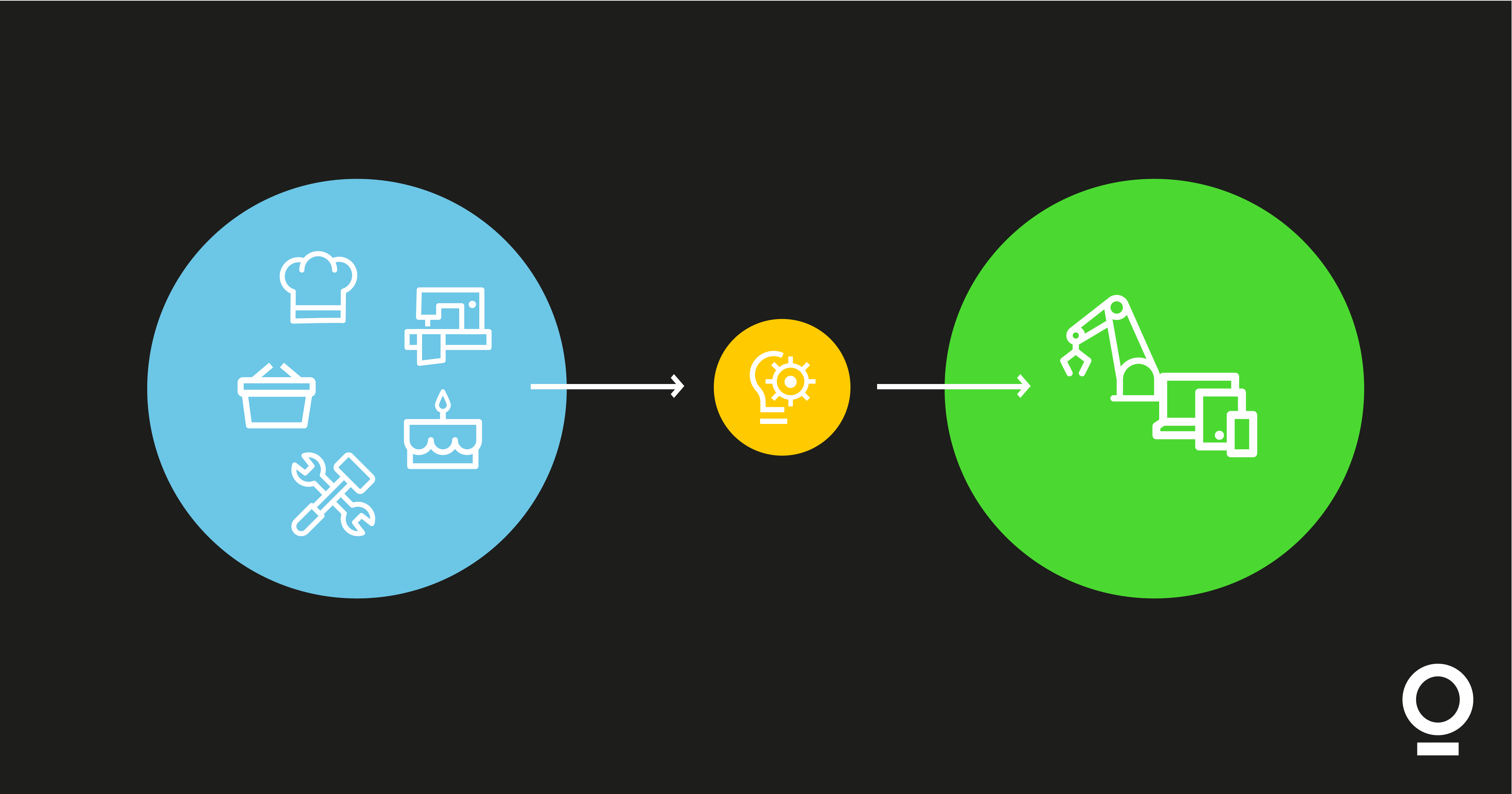Recent months have shown that when thinking about business management and growth, common sense is not enough to anticipate possible scenarios. What to base plans on, how to evaluate digital maturity and prepare a digitalisation strategy, and is it worth starting or accelerating the digital transformation now? Here you will find answers based on the experiences of dozens of projects.
What are Digital Maturity and digital transformation all about?
Digital Maturity, or a company’s Digital Maturity, describes the extent to which a company uses digital solutions in its operations, how innovation is implemented, the competencies of employees are developed, the awareness of the need to manage digitalisation and innovation, and how it is implemented in the company. Boards of directors may have different motivations for determining a company’s Digital Maturity. Usually, however, this is linked to the company’s move to implement innovation or the need to sort out ongoing digital transformation processes.
Digital transformation is the change a company undergoes, involving the use of digital technologies to achieve the organisation’s goals. You will read about what goals can be achieved through digital transformation later in this article.
Determining digital maturity can and should be a prelude to creating a digital strategy for a company. By digital strategy we mean much more than online marketing strategy or infrastructure and computer management. The notion of digital strategy in the Polish context is mainly found in marketing and is identified with the strategy of building and maintaining customer relations online or using online tools, including social media, to communicate with the company’s environment.
At EDISONDA, however, we understand it much more comprehensively. We consider the entirety of a company’s activities directed inside and outside the organisation, as well as the level of digitalisation of these activities in relation to the needs of the company, its contractors, customers, and employees. In this sense, digital strategy guides the direction and means of implementing the company’s digital development, i.e. increasing its Digital Maturity.
Would you like to see what stage of digitisation your company is at and plan your strategy?
When is a good time to think about digital strategy
When a new business takes off: this is the moment to answer questions about the potential of the idea, the audience for the service or product and their needs, and the value proposition you will offer them.
- Are your customers online?
- Are they looking online for inspiration, information, or an offer to buy immediately?
- Can the product your company offers be delivered digitally?
This is also the time to consider what you and your colleagues will be doing yourself, what you can outsource, and what you can automate. Consider how you will communicate with contractors and customers. And finally (as the last few months have shown can be crucial) think about a plan B. What if customers overlook your value proposition? If customer and contractor behaviour or your business conditions change suddenly due to some external factor, e.g. trade restrictions, internet load.

When the world changes: Suppose you are running a growing business. The business grows and it becomes increasingly difficult to control the number of tasks and how individual employees carry them out. Contractors emerge with different expectations than before, their employees expect an order of your range to be similar to an order on just-eat.co.uk or AliExpress. You are entering new markets, where the reference for a business like yours is no longer Allegro or Booking.com.
Or in another way: your company has a website, but it operates mainly offline and was doing well as long as the customer was able to contact you ‘face to face’, e.g. to arrange a visit from a sales representative. Orders flow in by email, only occasionally does an email get lost or you wait too long for a reply. Your competitors serve customers via a purchasing platform.
Each of these situations, even under less apocalyptic conditions than at present, in the shorter or longer term requires your response. When you know it’s a favourable time to grow and leapfrog the competition, but you’re not sure what direction will bring the most benefit in the medium term. Improving the flow of information within the company with an intranet? New e-commerce? Electronic customer service? Automation of the order-to-cash process? Delivery tracking system thanks to IoT?
Where to start
You are an expert in your field and employ specialists. However, unless you are a large corporate group – you are unlikely to have all the possible competences needed for the digital transformation of your company. It is difficult to assess all areas of your business on your own, objectively. It is also difficult to compare them with how your direct and indirect competitors operate, and to pick out the solutions that are best suited to your organisation’s operating conditions. The experience of the companies we work with shows that it is a good idea to invite someone from the outside, who has experience from similar and different companies and asks the right questions, for such an overview and planning.
Digital Maturity – what do we assess?
Even if you are planning changes in just one aspect of the company, it is a good idea to start by looking at the whole. This will allow you to assess the baseline and spot elements from other areas of the business that may affect the changes you are making. In turn, during the implementation phase, knowing the baseline will make it easier to monitor the impact of the changes on the company as a whole.
A holistic view of the company should take into account:
The size of the company and the level of dispersion of its structure – if the company has branches, include them all in the analysis. Even if you want to start the changes from the head office or one subsidiary. Otherwise, you will have to do the analysis again each time you include another branch in the changes. Only then the plan will also need to be modified, as it does not take into account the different operating conditions of the individual branches.
Type of company activity and processes realised in the company – both main processes (e.g. production, sales, distribution) and supporting processes (accounting, marketing, HR) are important. Analyse how these processes are organised and the digital and analogue tools used to implement them. Gather information on how well these solutions meet the needs of the company and customers. Note whether these solutions create synergies with the tools used in related processes.
Interaction with the environment – what is the company’s relationship with contractors and with customers? What communication and service channels do you have in place and how do your audiences rate them? What are your competitors better at, and what solutions do they use?
Competencies and how they are acquired – what competencies do your employees have, how do they learn to use the tools used in the company, and how are new ones implemented. What are their habits in terms of competence acquisition and problem-solving? How does the company acquire new competences – by retraining employees, by hiring new ones who have the competences needed? All this will influence the adoption of new solutions.
Access to data and how it is processed – one of the undoubted advantages of digitalisation is that a lot of data hitherto requiring tedious reporting can be obtained by the way, as it were. However, if reporting was not one of the intended functions of the changes, or if employees are not competent enough to generate and read reports, the potential to base decisions on the data generated by the implemented systems is wasted. The same happens when the technologies used to digitise different processes are incompatible and their combination and development require additional investment or effort.

The way change is managed in the organisation – recall two examples of implementations in the company. For example the implementation of an online shop a year and a half ago went smoothly, the customers are happy, and the employees too, because even instructing the customer over the phone how to find the product and its parameters there is very easy.
On the other hand, the implementation of a new accounting system is already dragging on for another month and is costing the company a lot of money and nerves. It is worth taking a look at both of these processes and finding out what promotes and what stops the implementation of new solutions in the company.
What is the effect of a Digital Maturity analysis?
Digital Maturity analysis of a company is an objective, comprehensive and cross-sectional screening of the company’s business areas. As a result, you receive an assessment of your company’s condition with an indication of its strengths and weaknesses, supported by data from the analysis. This should be the basis for a list of recommendations: possible competitive advantages and ways to realise them.
The consultants who conducted the analysis should provide a plan of practical measures in the short and medium-term that will increase the sustainability of the business, as well as indicate the company’s growth prospects. This plan must have specific measurable performance indicators. It should not just be an output provided by the consultants – for it to have a raison d’être, it must be discussed with the company’s management.
What is it all for? The plan prepared during a properly conducted analysis and solution-seeking process, with the involvement of consultants, key company staff, and management, should be adopted as the company’s digital strategy. The effect of its implementation will be to modernise the business, accelerate digital transformation, and increase competitiveness.
Strategy – 4K

To have a chance of success, the strategy should be based on 4 elements:
Competences – those already held within the company and those that employees need to acquire and develop in order to use digital solutions to the company’s advantage. Therefore, when implementing digital change, it is necessary to plan how employees will acquire new competences, how they will learn the basics of using the new solution, and how they will complement them so that their productivity increases over time. This is one element that has been missing from many of the projects to which our consultants have been invited, and without its completion, the project is usually likely to come before the board a year or two after implementation to establish ‘what went wrong’. Employees unprepared to use a new solution will either insist on the previous one they already know, or they will look for another one that someone advertises to them as better.
Communication – changes that are not openly communicated create anxiety and resistance. Measures that are communicated gradually and at an early enough stage make it possible to build a positive attitude in employees, involve them in the change process and use their driving energy to better implement solutions. This applies to Digital Workplace or Digital Employee Experience projects, as well as to customer service platforms.
Consequences – often digital implementations affect other aspects of the business. They are also time-consuming, so their effects are sometimes delayed. It is important to stick to the plan and not hold up the process if the changes are not immediately successful. You need to keep in mind at all times what goal you want to achieve and monitor whether that is where you are heading. You need to keep a close eye on how the actions set out in the strategy affect other areas of the company. Finally, you also cannot forget about changes in the environment. Is the increase or decrease in sales the result of your well or badly adopted mailing, discount action or the way you manage deliveries, or external factors (actions of competitors, weather, political decisions)?
Coordination – digital strategy is a one-person responsibility only in a one-person company. Or at least it should be. Since, as I have shown in the previous three points, implementation requires multi-faceted decisions and actions, the implementation of the strategy will require the interaction of multiple managers and employees. In contrast, the ideal situation is when one person at the board level is the sponsor of change – he or she expects and enforces that changes are implemented to completion, and the different parts of the organisation work together to achieve this.
If you’re wondering what your company’s digital maturity is and whether it’s a good time for digital transformation – let’s talk. We’ll look for the answers together.





